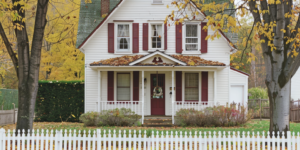3 Reasons Why Indoor Hemp Flowers Are Beneficial to Users

Hemp has gained immense popularity in recent times and for good reasons. With its wide range of health benefits and potential therapeutic properties, more people are turning to hemp flowers as a natural remedy for various ailments. Although hemp flowers have been traditionally used outdoors, there has been a recent shift towards indoor cultivation.
1. Controlled Environment
Indoor cultivation allows for a more controlled environment, which can significantly impact the quality of the hemp flowers. When hemp is grown outdoors, it is exposed to various environmental factors, such as fluctuations in temperature, humidity, and rainfall, which can affect the plant’s growth and quality. In contrast, indoor cultivation offers a stable and consistent environment where growers can control the temperature, humidity, light, and nutrients provided to the plants. This results in higher quality and more potent hemp flowers free from harmful contaminants such as pesticides and heavy metals.
Additionally, indoor cultivation eliminates the risk of exposure to smog and dust, which can accumulate on outdoor plants. This makes indoor hemp flowers a safer and healthier option for users who want to avoid exposure to environmental toxins.
2. Enhanced Terpene and Cannabinoid Profile
Terpenes and cannabinoids are the compounds that give hemp flowers their unique aroma, flavor, and potential therapeutic properties. When grown indoors, hemp flowers have a higher concentration of terpenes and cannabinoids, resulting in a more potent and flavorful product. This is because indoor cultivation provides an optimal environment for the plants to produce these compounds. Growers can adjust the light spectrum and intensity, temperature, and humidity to promote the production of specific terpenes and cannabinoids.
Moreover, indoor cultivation allows growers to select and breed hemp strains high in specific terpenes and cannabinoids, depending on the desired effect. For example, strains high in myrcene and limonene may promote relaxation and stress relief. In contrast, strains high in pinene and caryophyllene may have anti-inflammatory and pain-relieving properties. This means users can choose a strain that suits their needs and preferences.
3. Increased Availability
Indoor cultivation has made hemp flowers more widely available, regardless of geographical location. With the ability to control the growing environment, hemp flowers can be produced year-round, regardless of the climate. This means that users can access high-quality hemp flowers, even in areas where outdoor cultivation is not feasible. Additionally, indoor cultivation allows for producing hemp flowers in large quantities, which can help meet the growing demand for hemp products.
Furthermore, indoor cultivation has made it easier for growers to comply with regulations regarding the THC content of hemp flowers. Hemp plants must contain less than 0.3% THC to be considered legal in many countries. Indoor cultivation allows growers to closely monitor the THC levels and ensure that their products meet the legal requirements.
Indoor hemp flowers offer numerous benefits to users, including a controlled environment, enhanced terpene and cannabinoid profile, and increased availability. With the ability to control the growing environment, indoor cultivation produces high-quality, potent, and flavorful hemp flowers free from harmful contaminants. The increased availability of indoor hemp flowers means that users can access high-quality products regardless of location. The benefits of indoor hemp cultivation make it a viable option for growers and users alike, and we will likely see a shift toward indoor cultivation in the future.







